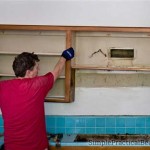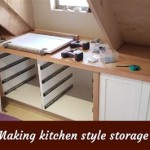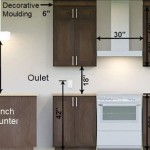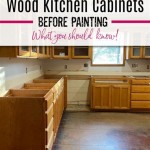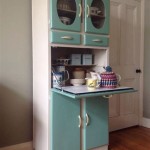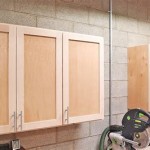Alternative Kitchen Cabinet Doors: Redefining Style and Function
Kitchen cabinet doors are a critical element in defining the style and functionality of any kitchen. They contribute significantly to the overall aesthetic appeal and play a crucial role in storage and organization. While traditional cabinet doors remain a popular choice, alternative options offer a unique opportunity to personalize the kitchen, reflect individual tastes, and achieve a distinct design statement. Exploring these alternatives can lead to a more visually engaging and practical kitchen space.
This article delves into a range of alternative kitchen cabinet door styles, materials, and design concepts, providing a comprehensive overview for homeowners and design professionals seeking to deviate from conventional cabinet door choices. We examine the benefits and potential drawbacks of each alternative, considering factors like cost, durability, maintenance, and aesthetic compatibility with various kitchen designs.
Glass-Fronted Cabinet Doors: Transparency and Visual Appeal
Glass-fronted cabinet doors represent a classic alternative that can add elegance and sophistication to a kitchen. They offer a glimpse into the contents of the cabinets, allowing for the display of attractive dishware, glassware, or decorative items. This transparency can visually expand the perceived space of the kitchen, making it feel more open and airy, particularly in smaller rooms.
Several variations of glass-fronted cabinet doors exist. Clear glass offers maximum visibility, while frosted glass provides a degree of privacy and obscures the contents. Leaded glass, with its intricate patterns and designs, can introduce a touch of vintage charm or artistic flair. Textured glass, such as reeded or hammered glass, adds visual interest and dimension.
The primary advantage of glass-fronted cabinets lies in their aesthetic appeal. They can brighten a kitchen and create a focal point. However, they also require meticulous organization within the cabinets, as clutter and disarray will be readily visible. Dusting the glass regularly is also essential to maintain a clean and polished look. The cost of glass-fronted cabinets can vary depending on the type of glass, frame material, and complexity of the design.
Consideration should be given to lighting when opting for glass-fronted cabinets. Internal cabinet lighting can highlight the displayed items and enhance the overall ambiance of the kitchen. Strategically placed lights can illuminate the contents and draw attention to the visual appeal of the cabinets.
Metal Cabinet Doors: Industrial Chic and Modern Minimalism
Metal cabinet doors offer a bold departure from traditional wood or laminate options. They are often associated with industrial or modern minimalist design styles, providing a sleek and contemporary aesthetic. Stainless steel is a popular choice for metal cabinet doors due to its durability, hygiene, and resistance to corrosion. Aluminum and other metals can also be used, often powder-coated for added color and protection.
Metal cabinet doors are highly durable and easy to clean, making them a practical choice for busy kitchens. They are resistant to stains, scratches, and heat damage. The smooth, non-porous surface of metal prevents the growth of bacteria and mold, contributing to a hygienic kitchen environment.
One of the key benefits of metal cabinet doors is their versatility. They can be incorporated into various kitchen designs, from ultra-modern to transitional. Different finishes, such as brushed, polished, or matte, can further customize the look. Metal can be paired with other materials, such as glass or wood, to create a visually interesting contrast.
However, metal cabinet doors can be more expensive than traditional wood or laminate options. They may also show fingerprints and smudges more readily, requiring more frequent cleaning. The cold, hard appearance of metal may not appeal to everyone, and it's important to consider the overall warmth and ambiance of the kitchen when making this choice.
Sound dampening may be a consideration with metal cabinet doors. The inherent properties of metal can amplify the sound of closing doors, which can be mitigated through the use of soft-close hinges and sound-absorbing materials on the interior of the cabinets.
Open Shelving: Accessibility and Informal Style
Open shelving represents a minimalist approach to kitchen storage, replacing traditional cabinet doors with exposed shelves. This design choice promotes accessibility and creates an informal, airy atmosphere. Open shelving is particularly well-suited for displaying frequently used items, such as dishes, cookware, or spices, making them readily available.
Open shelving can be constructed from various materials, including wood, metal, or glass, allowing for customization to match the overall kitchen design. Wooden shelves offer a warm and natural aesthetic, while metal shelves provide a more industrial or modern look. Glass shelves can create a sense of lightness and transparency.
The primary advantage of open shelving is its visual appeal and accessibility. It allows homeowners to showcase their personal style and create a visually dynamic kitchen space. The lack of doors simplifies access to frequently used items, streamlining meal preparation and cooking tasks.
However, open shelving requires diligent organization and cleaning. Items on display are exposed to dust, grease, and airborne particles, necessitating regular cleaning to maintain a presentable appearance. Clutter can quickly become a problem with open shelving, and it's important to maintain a minimalist approach to avoid a disorganized look.
Consideration should be given to the placement of open shelving. It's generally best suited for items that are used frequently and are aesthetically pleasing. Items that are not visually appealing or are rarely used should be stored behind closed doors to maintain a clean and organized kitchen.
Reclaimed Wood Cabinet Doors: Rustic Charm and Sustainable Design
Reclaimed wood cabinet doors offer a unique blend of rustic charm and sustainable design. Using reclaimed wood not only reduces waste but also adds character and history to the kitchen. Each piece of reclaimed wood has its own unique story, with variations in color, grain, and texture that create a one-of-a-kind look.
Reclaimed wood can be sourced from various sources, such as old barns, factories, or demolished buildings. It's often available in a variety of species, including pine, oak, and maple. The wood is typically cleaned, sanded, and treated to ensure its suitability for use in cabinet doors.
The primary advantage of reclaimed wood cabinet doors is their aesthetic appeal. They add warmth, texture, and visual interest to the kitchen, creating a welcoming and inviting space. The unique imperfections and variations in the wood contribute to its charm and character.
However, reclaimed wood can be more expensive than new wood, depending on the availability and rarity of the material. It may also require more maintenance, as it can be more susceptible to moisture damage and insect infestation. Proper sealing and treatment are essential to protect the wood and ensure its longevity.
The sustainability aspect of reclaimed wood is a significant advantage for environmentally conscious homeowners. By using reclaimed wood, you are reducing the demand for new wood and helping to preserve forests. It's a responsible and ethical choice that can contribute to a more sustainable kitchen design.
Louvered Cabinet Doors: Ventilation and Coastal Style
Louvered cabinet doors offer a distinctive design element that combines ventilation with a touch of coastal or country charm. The horizontal slats allow air to circulate within the cabinets, making them ideal for storing items that require ventilation, such as linens, produce, or cleaning supplies.
Louvered cabinet doors can be constructed from various materials, including wood, MDF, or vinyl. Wood is a popular choice for its natural warmth and aesthetic appeal. MDF offers a more affordable option, while vinyl is resistant to moisture and easy to clean.
The primary advantage of louvered cabinet doors is their ventilation. They prevent the buildup of moisture and odors within the cabinets, keeping items fresh and dry. This makes them particularly well-suited for pantries, laundry rooms, or bathrooms.
However, louvered cabinet doors can be more difficult to clean than traditional cabinet doors. The slats can trap dust and dirt, requiring regular cleaning to maintain a presentable appearance. They may also be more expensive than standard cabinet doors, depending on the material and construction.
The aesthetic style of louvered cabinet doors leans towards a coastal, country, or traditional design. They can add a touch of relaxed elegance to the kitchen, creating a comfortable and inviting atmosphere. They can also be painted or stained to match the overall color scheme of the kitchen.
Beadboard Cabinet Doors: Timeless Texture and Cottage Charm
Beadboard cabinet doors offer a classic and timeless design that evokes a sense of cottage charm and traditional craftsmanship. The vertical grooves create a textured surface that adds visual interest and depth to the kitchen. Beadboard is a versatile material that can be incorporated into various kitchen styles, from farmhouse to coastal to transitional.
Beadboard cabinet doors are typically constructed from wood or MDF. Wood offers a natural warmth and aesthetic appeal, while MDF provides a more affordable and durable option. MDF is also less prone to warping and cracking than wood, making it a good choice for kitchens with high humidity levels.
The primary advantage of beadboard cabinet doors is their aesthetic appeal. They add texture and visual interest to the kitchen, creating a warm and inviting atmosphere. The vertical grooves can also visually elongate the space, making the kitchen feel taller.
However, beadboard cabinet doors can be more difficult to clean than traditional cabinet doors. The grooves can trap dust and dirt, requiring regular cleaning to maintain a presentable appearance. They may also be more expensive than standard cabinet doors, depending on the material and construction.
The aesthetic style of beadboard cabinet doors leans towards a traditional, cottage, or farmhouse design. They can be painted or stained to match the overall color scheme of the kitchen. They pair well with other classic design elements, such as apron-front sinks, shaker cabinets, and subway tile backsplashes.
When selecting alternative kitchen cabinet doors, it's essential to consider the overall style of the kitchen, the desired functionality, and the budget. Each option offers a unique set of benefits and drawbacks, and it's important to weigh these factors carefully to make an informed decision. Consulting with a kitchen designer or contractor can provide valuable insights and help ensure that the chosen cabinet doors are a perfect fit for the space.

11 Seriously Clever Kitchen Cabinet Alternatives Bob Vila

Alternatives For Glass Front Kitchen Cabinet Doors Cabinets

11 Seriously Clever Kitchen Cabinet Alternatives Bob Vila

6 Alternative And Stylish Cabinet Doors

Kitchen Cabinet Alternatives Rowe Spurling Paint Company

6 Alternative And Stylish Cabinet Doors

11 Great Alternatives To Glass Front Cabinets

6 Alternative And Stylish Cabinet Doors

11 Great Alternatives To Glass Front Cabinets

6 Alternative And Stylish Cabinet Doors
Related Posts

